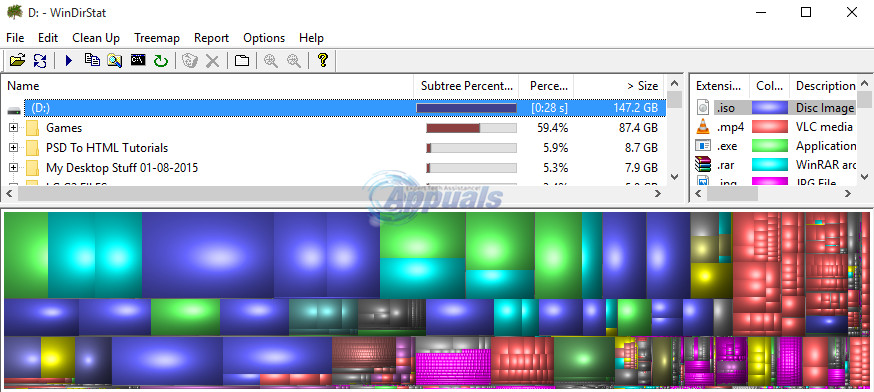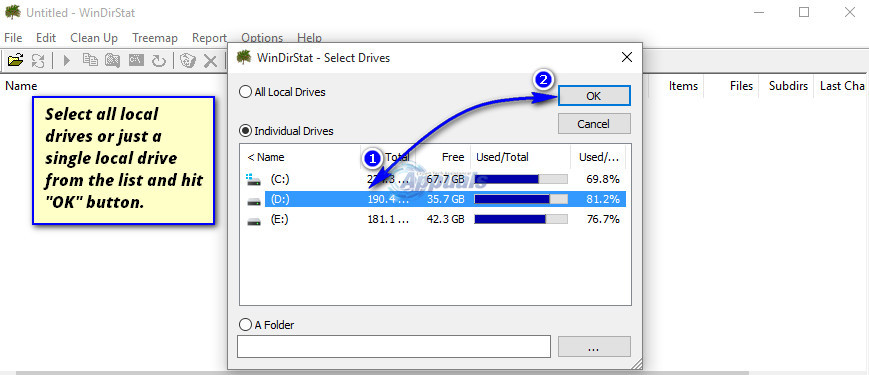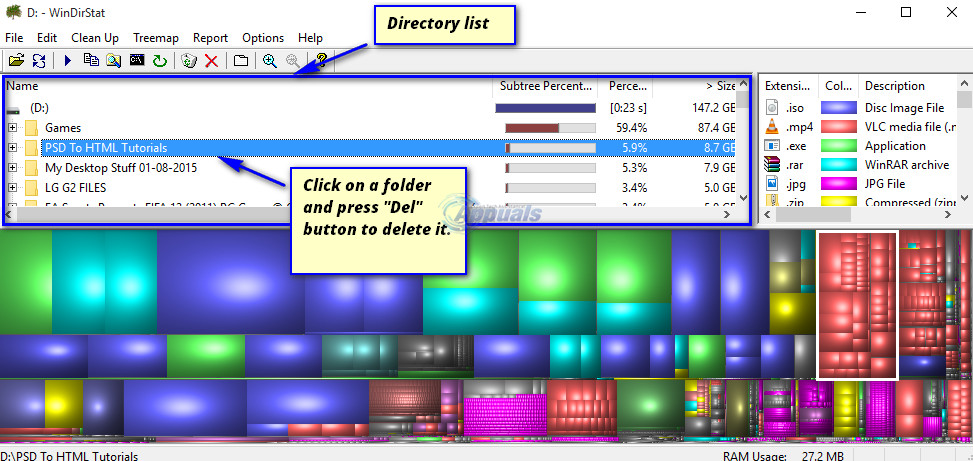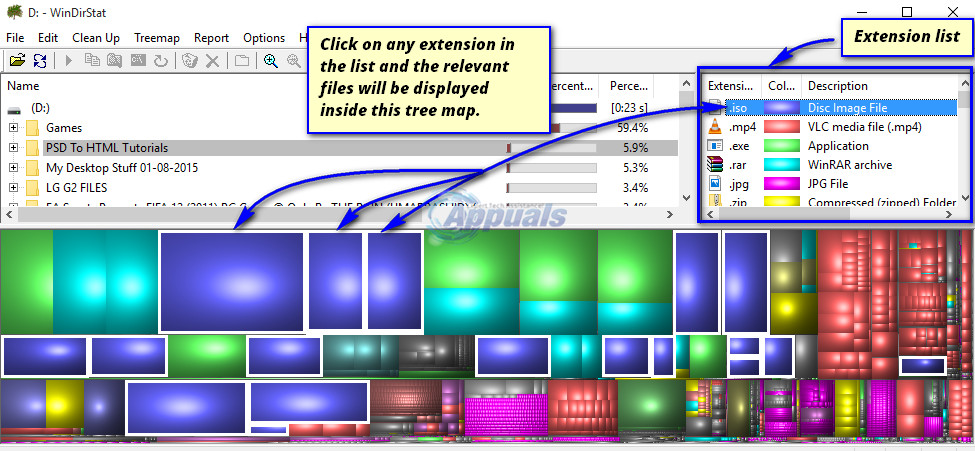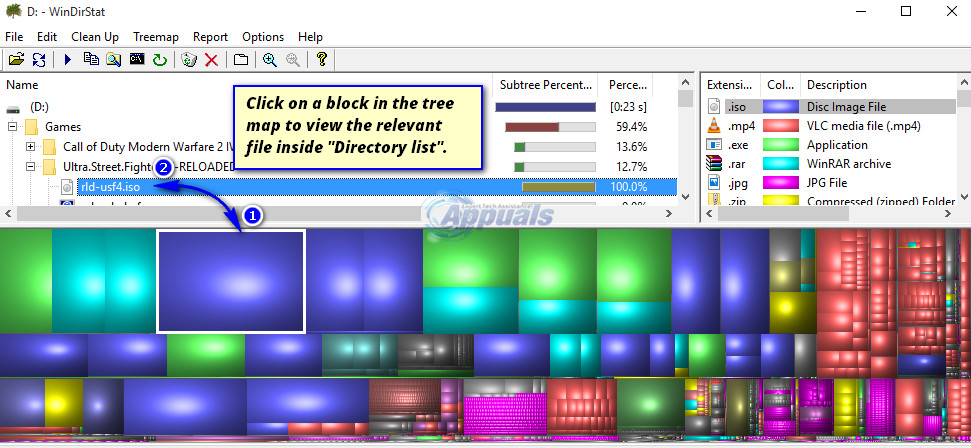Folders or files taking more space are represented at the top of the list along with different attributes like percentage of the space occupied, size, number of files etc. Windirstat also creates an extension list with each extension represented by a specific color. Clicking on a particular extension selects the relevant section on the map. The best of all, you can also delete files and folders you want by right clicking on the target and selecting the delete option from the contextual menu.
Downloading and Installing Windirstat Hard Drive Visualization Tool
Windirstat is available for free over the internet. You can Download WinDirStat by Clicking Here. After downloading the tool, double click on the executable file to initialize the installation process and click Next multiple times to proceed
Using the Windirstat Hard Drive Visualization Tool:
Windirstat is pretty easy to use. At the start-up, it would prompt you to select the local drive you want to visualize. You can also choose to visualize all the local drives present on your hard drive. If you want to select a folder instead of your local drives, you can choose that folder through the option present at the bottom of the windirstat tool’s select drive wizard. In my case, I will select local drive D from the list.
It would start scanning your selected local drive and will take some time depending on the size of your local drive. When the process is done, you will see three sections with directory list at the top left, extension list at the top right and a clickable tree map at the bottom. Directory List: The directory list contains all the files and folders along with their attributes, present in your selected local drive. You can expand a particular folder by clicking on the + sign to view the files inside. This list also shows the disk space in percentage acquired by a particular file or folder. To delete a file or folder, you need to press the Del button on your keyboard while that file is selected.
Extension List: Extension list contains a list of colored file extensions present in the selected local drive. Each extension has a specific color and they are arranged in descending order with the ones taking more space at the top. Clicking on any extension will display the selected one inside the tree map.
Tree Map: A tree map is a visual representation of the files present in the local drive. Every file or folder is illustrated in the form of a colored block. Each file extension has different color and size based on the file extension and file size respectively. The bigger the size of the file or folder is, the bigger will be the size of the map. You can click on any block inside tree map to view the file in the directory list.
Windirstat is quite a handy tool to visualize and manage your hard drive in a comfortable way.
Fix: New Hard Drive not showing up in Disk ManagementWhich Hard Drive Should You Buy for a Gaming PCHow To Convert An External Hard Drive Into An Internal Storage HDD Unit[Fix] Error ‘1720-SMART Hard Drive Detects Imminent Failure’
